Panasonic Leica 42.5mm F1.2 DG Nocticron ASPH Review:
It seems that no camera system is complete without certain lenses, and one of these lenses is a fast short tele. Along with a few other choices, the Panasonic Leica 42.5mm F1.2 DG Nocticron ASPH lens, which gives its micro four thirds user an 85mm equivalent, fits this class perfectly. It’s one of those lenses in the “special” category that all camera systems have, and of course, it also comes with a high price. In fact, with an asking price of almost $1,600 ($1,400 now at B&H Photo), it is one of the most expensive lenses that you can purchase for the micro four thirds system. With so many other great options to choose from, one has to wonder, is it really worth the price? Well, I wanted to find out for myself, so when I had the Olympus Pen-F on loan, the first lens I asked for was the Nocticron. I realize that this lens has been out for a while now but it’s something that I’ve always wanted to try for long term. Plus, since there are plenty of great reviews of this lens already, I can concentrate on more of the fun stuff like the photos, and try to give all of you a more real world experience of it. But for those who also like the technical stuff, don’t worry; there will be plenty of it as well ;).
Panasonic Leica 42.5mm F1.2 DG Nocticron ASPH Build Quality:
As with all my other reviews, I like to discuss overall build quality first. In this department, the Panasonic Leica 42.5mm F1.2 DG Nocticron ASPH is arguably one of the best built lenses that you can purchase in the micro four thirds system. In terms of build quality, it even puts my Fuji XF 56mm APD, which I absolutely love, to shame.
The name, Nocticron, is obviously used to link it to the Leica Noctilux, and this lens definitely gives you a taste of the amazing Noctilux not just in appearance but also in build. It’s all-metal construction feels so solid and tank-like. There are absolutely no creaks or rattles coming from anywhere. There are no signs of cheapness or that Panasonic took any shortcuts. On the contrary, it looks like they threw everything at it. Functions like the aperture ring click solidly in third stops, and even the font on the ring looks similar to the font found on M lenses. Too bad the aperture ring does not work with Olympus cameras since Olympus does aperture adjustments in body. The focus ring is also very smooth to operate. In addition, this lens comes with Power O.I.S., which basically stands for optical image stabilization. Personally, I like well-built stuff, and in my opinion, this lens is in a class of its own in the micro four thirds world, and quite frankly, even when compared to lenses in several other systems. I’m extremely impressed with it’s build quality, and I can not say enough good things about it. However, keep in mind that this lens isn’t weathered sealed. I don’t find this much of a problem but some may.
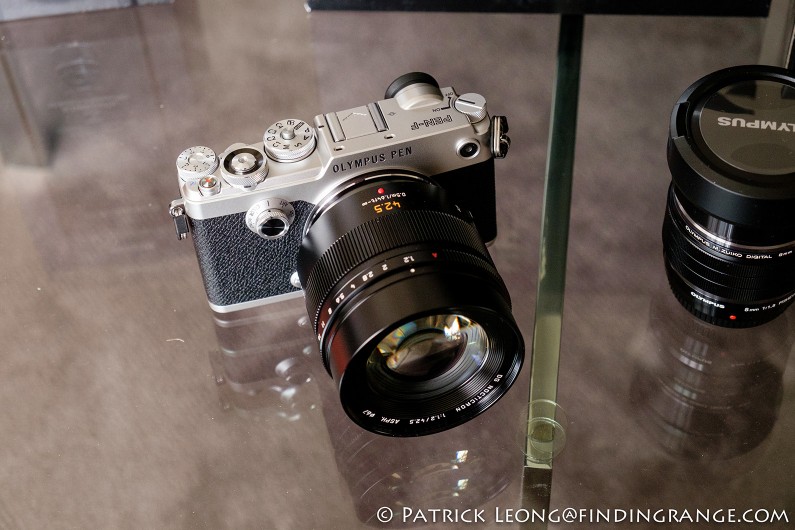
↑ The Panasonic Leica 42.5mm F1.2 Nocticron ASPH mounted on the Olympus Pen-F.
Now, with a maximum aperture of F1.2, and a equivalent focal length of 85mm, the Nocticron is bound to be large. At 2.91″ by 3.02″, it’s definitely something people will notice on compact micro four third bodies. In fact, if you use this with it’s metal lens hood, it’s almost double the length, which is why I shot this lens without the hood. Already, without the hood, I could see people look straight at the Nocticron, while I was walking on the street. I didn’t even need to raise the camera to my eyes. Of course, I also ended up starting some great conversations with some fellow photographers I met on the street because of this lens too. Most found the big front element impressive. As one film photographer (who was shooting with a Hasselblad X-Pan) said to me, “Wow, that is some killer glass you have there”.
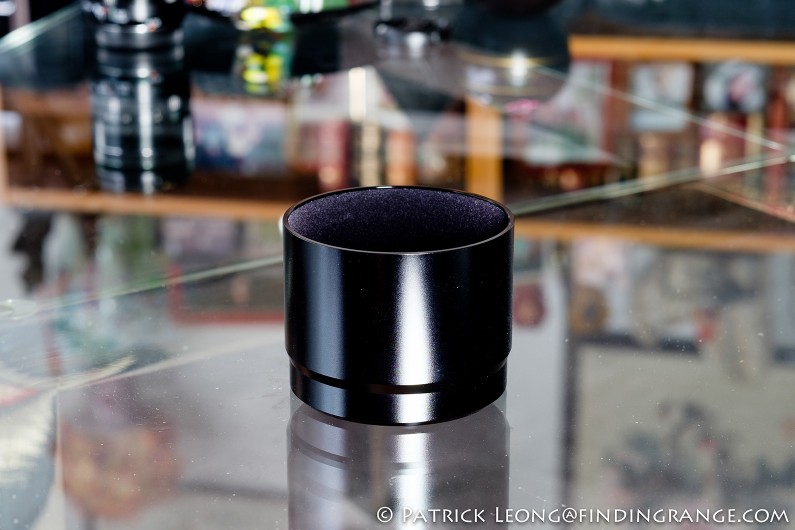
↑ The lens hood is made out of metal, and it’s almost the same size as the lens itself.
In addition to its overall size, the Panasonic Leica 42.5mm F1.2 DG Nocticron ASPH is a heavy lens for the micro four thirds system. It’s official weight is 425 g or 15.04 oz. Now, let’s put this in perspective: there’s 16 oz to a pound, so in other words, the Nocticron weighs almost 1 lb. Keep in mind that this is a fixed focal length lens, and not a zoom.
But the large size and weight are to be expected from a lens of this focal length and maximum aperture speed. Plus, this is a flagship lens, so I imagine Panasonic had no plans of holding anything back or making compromises in order to save weight or make it more compact when they were designing this lens. Personally, I wouldn’t have it any other way. When you buy a lens like this, it’s all about top of the line performance. It’s like when you buy a Ferrari or something similar; you’re looking to get the most out of it performance wise, not to make sure it fits four people or it has enough ground clearance to make it over an on ramp.
Furthermore, in practice the Panasonic Leica 42.5mm F1.2 DG Nocticron ASPH is actually quite well-balanced on a camera body. I had this on the Pen-F, and I never once felt like I had any issues shooting with this lens. In fact, I found the weight actually a good thing. It helped me stabilize the camera better, and I think that’s very important considering its focal length. As we all know, a longer focal length is harder to hold steady. Of course, if a lens is too heavy, than it’s also harder to hand hold but in this case, I found the weight matched well with the overall size of this lens, and balance perfectly on a body like the Pen-F. I actually shot all the images in this review without any image stabilization.
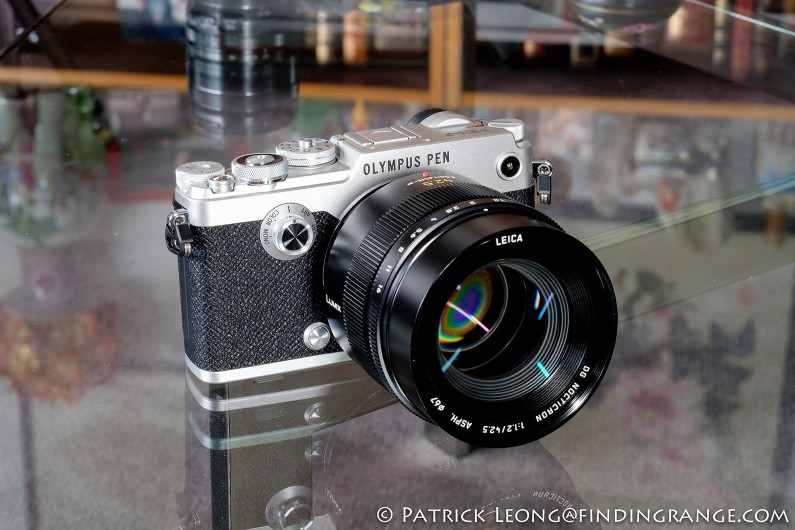
↑ Even though the lens is large for a micro four thirds system, I found it very well-balanced and easy to shoot with.
Panasonic Leica 42.5mm F1.2 DG Nocticron ASPH Autofocus:
In addition to its superb build quality, I found the Panasonic Leica 42.5mm F1.2 DG Nocticron ASPH focused very quickly as well. In fact, I was quite surprised at how quick it focused considering the focal length, the maximum aperture, and the overall size of the lens. In my opinion, you won’t have any issues taking all kinds of photos ranging from portrait to street, and even action. I was even shooting in some dim lighting, and this lens performed like a champ. The Nocticron’s quick autofocus capabilities combined with the Pen-F’s (which is what I used to test this lens) quick reactions and lag free shutter is definitely something to be reckoned with, and there’s not much this combo can’t do. For street work, it’s great that the motor in this lens is also very quiet.
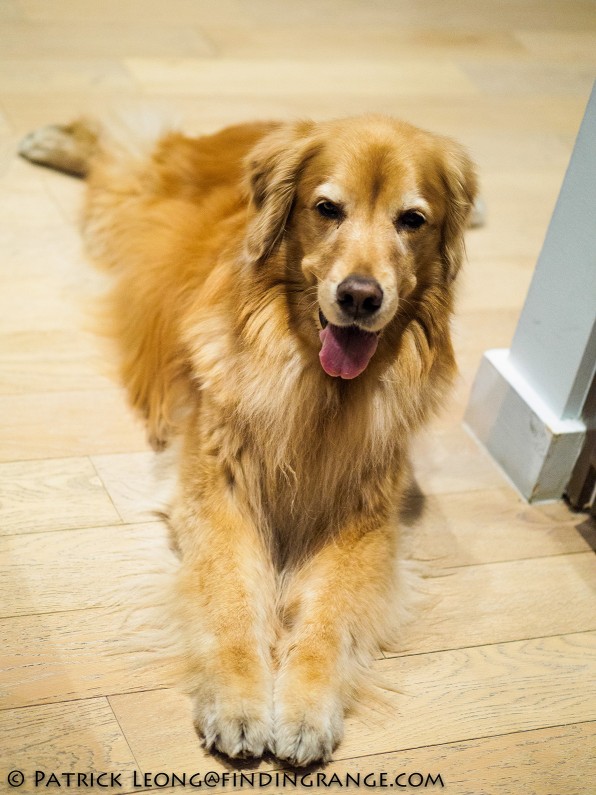
↑ Kopi, my sister’s golden retriever, doesn’t usually stay still enough for me to photograph her but with the Nocticron, it is no problem.
Panasonic Leica 42.5mm F1.2 DG Nocticron ASPH Image Quality:
Now, let’s talk about what I consider the most important feature of this lens: the image quality. There are 14 elements in 11 groups; there are two aspherical surfaces, one extra low dispersion lens, and one ultra high refractive index lens. It also has Nano Surface Coating, which helps prevent unwanted ghosting and flaring. The results? Simply put, the Panasonic Leica 42.5mm F1.2 DG Nocticron ASPH produces astounding image quality. This is the lens that you want in your bag for those once in a lifetime moments because it will capture them perfectly. Colors are rich and rendered absolutely beautifully. Skin tones are rendered perfectly as well, which is very important considering this is a portrait lens.

↑ A rainy day on the Manhattan Bridge. This was taken at F1.2.
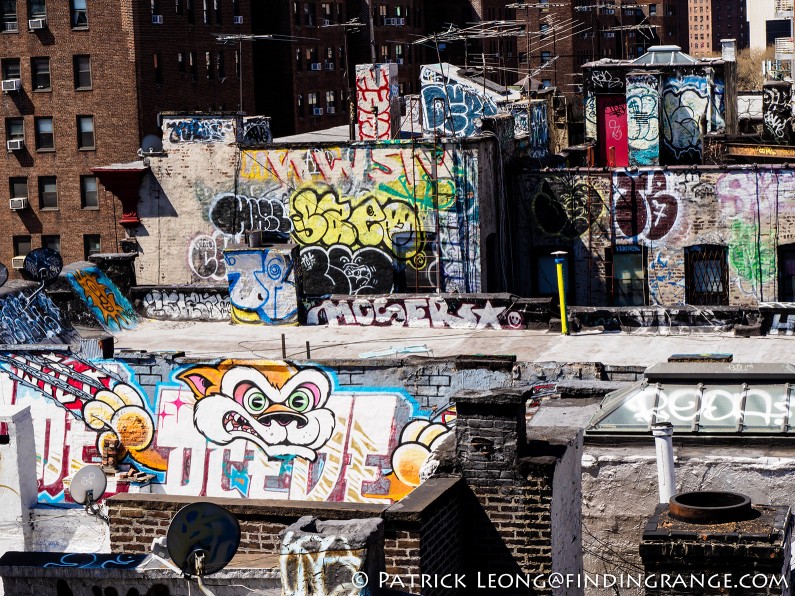
↑ This lens renders colors beautifully and naturally. This was taken at at F11.
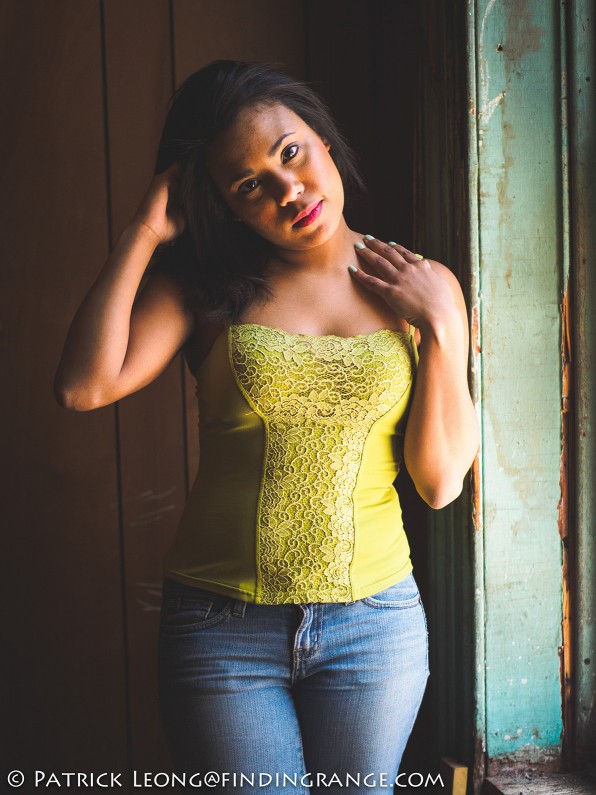
↑ Here’s a portrait I took using F1.2.
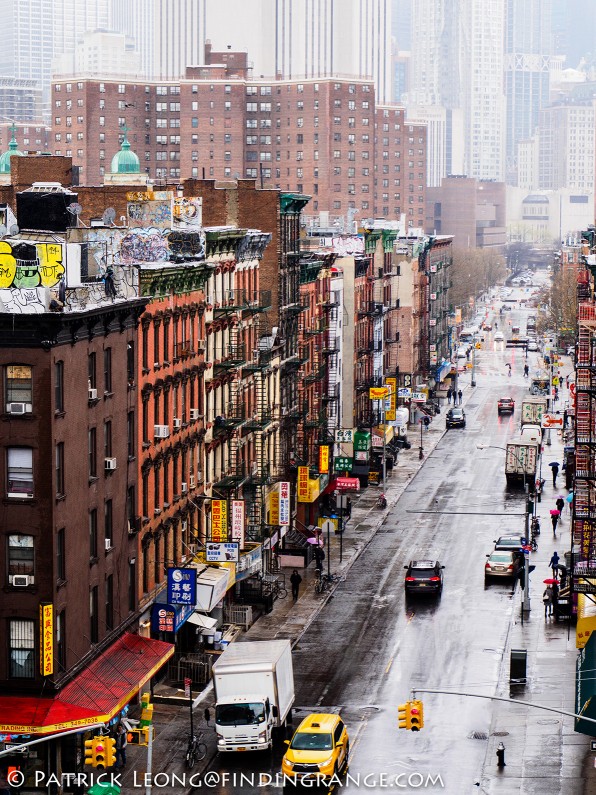
↑ This was taken at F4.5.
But it doesn’t stop there because the Panasonic Leica 42.5mm F1.2 Nocticron ASPH is near perfect in so many other ways optically. The lens produces images with beautifully three dimensional depth whether you are shooting at F1.2 or F11. It’s essentially distortion free, and I didn’t have much of an issue with flaring. In fact, I never once felt like I needed the hood, which is a good thing because it just makes this lens bigger. Vignetting is also extremely well-controlled, especially for a lens of this focal length and maximum shutter speed. You will see a little vignetting at the larger apertures only if you pixel peep. Otherwise, there is not enough to make any difference. In other words, I didn’t see any in my real world images, which is pretty darn impressive.
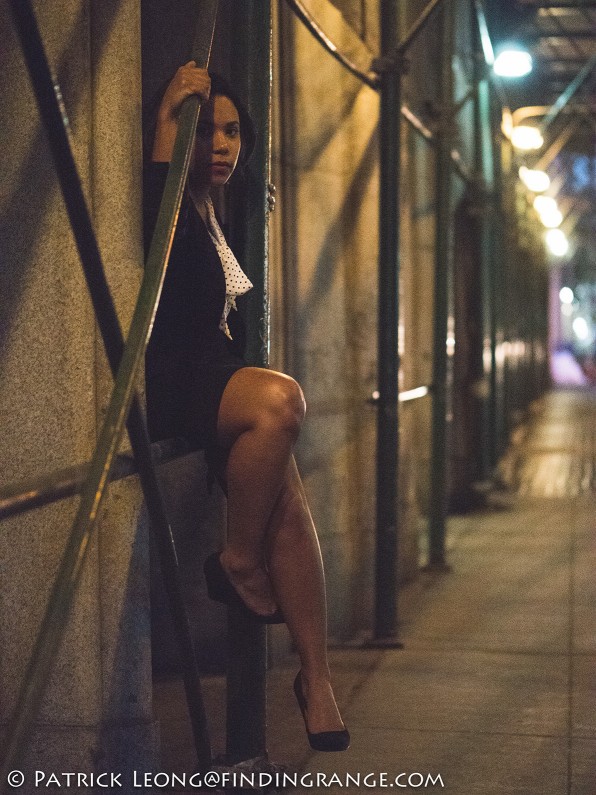
↑ I was testing out the high ISO capabilities of the Pen-F here. I kind of like the grainy look. this was taken at F1.2.
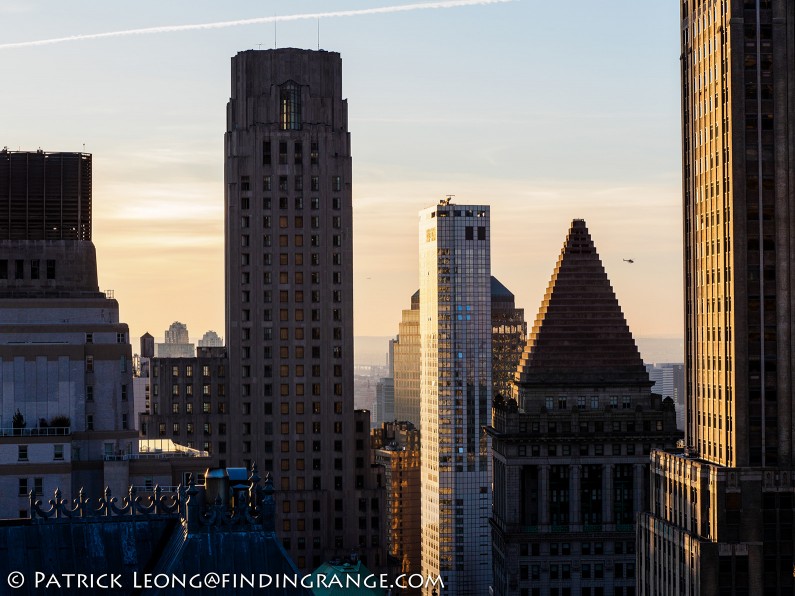
↑ This was taken at F8.
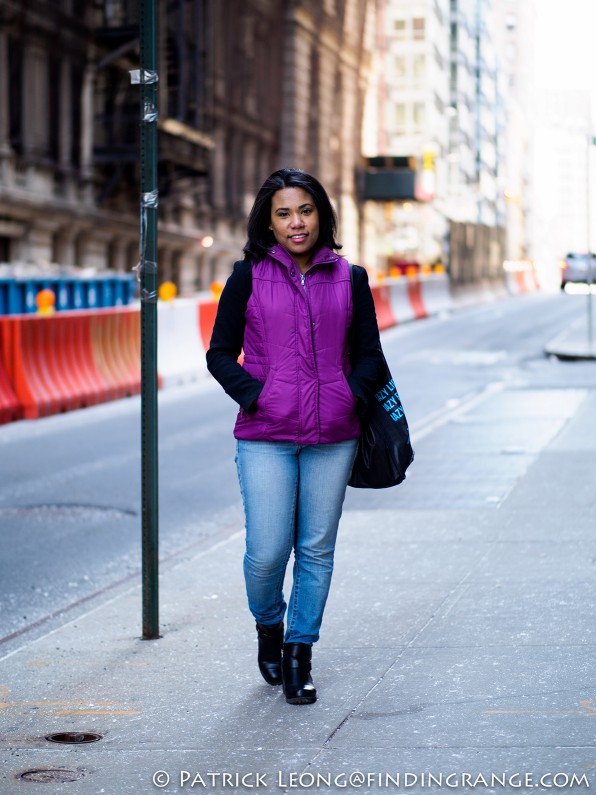
↑ This photo should give you an idea of how the shallow depth of field looks at a further distance when using the Nocticron’s maximum aperture.
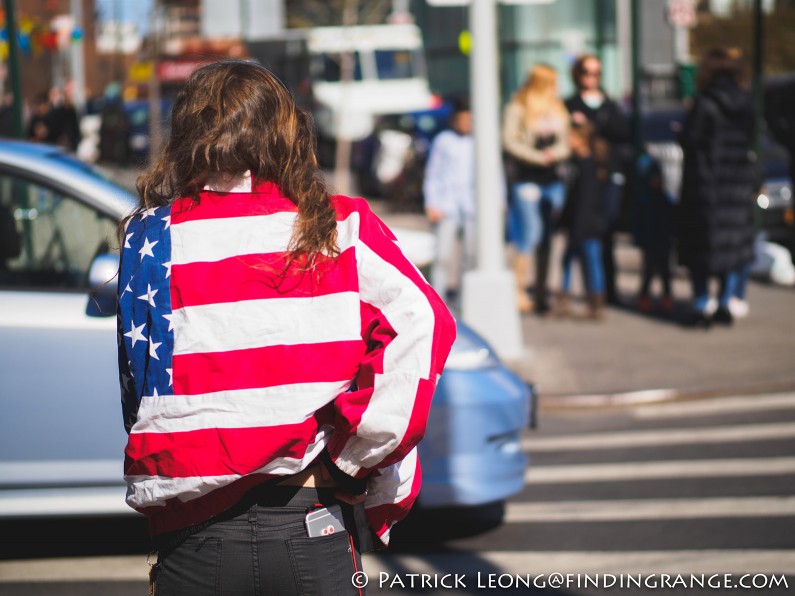
↑ It can get quite addicting using this lens at its maximum aperture speed. Not only does it look good, the autofocus is so quick that it makes it almost too easy to use it at F1.2.
The Panasonic Leica 42.5mm F1.2 DG Nocticron ASPH is also one of the sharpest lenses that I’ve ever had the pleasure of testing. At F1.2, the Nocticron isn’t just razor sharp in the center, it’s also just as sharp throughout most of the entire image. When you stop down to around F4, you’ll get even sharper images but I’m telling you, the images at F1.2 are already so sharp that it would be pretty hard to distinguish much of a difference, unless you’re pixel peeping. It’s really crazy how incredibly sharp this lens is, and that’s why I’m confident that you probably won’t find anything sharper than this lens in the micro four thirds world. It’s definitely the sharpest lens that I’ve personally ever used in the micro four thirds world.
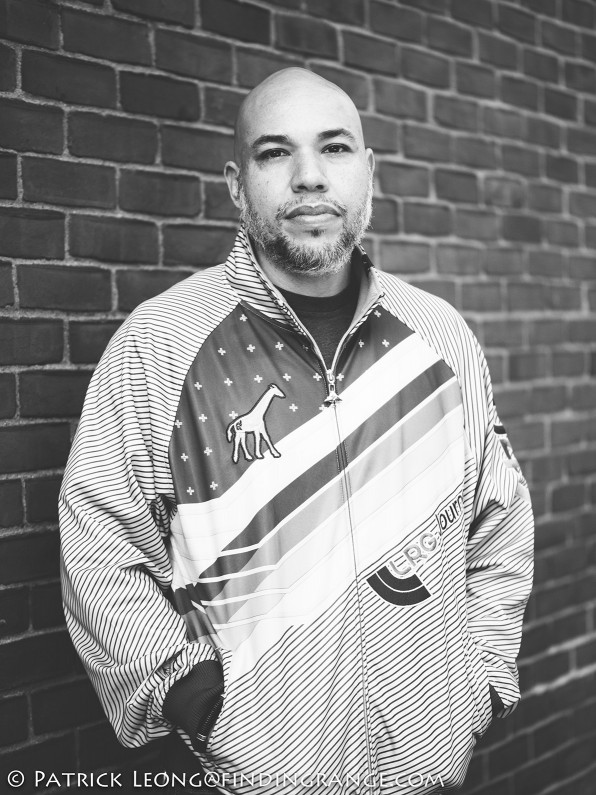
↑ This was taken at F1.2, and as you can see, the eyes are razor sharp.
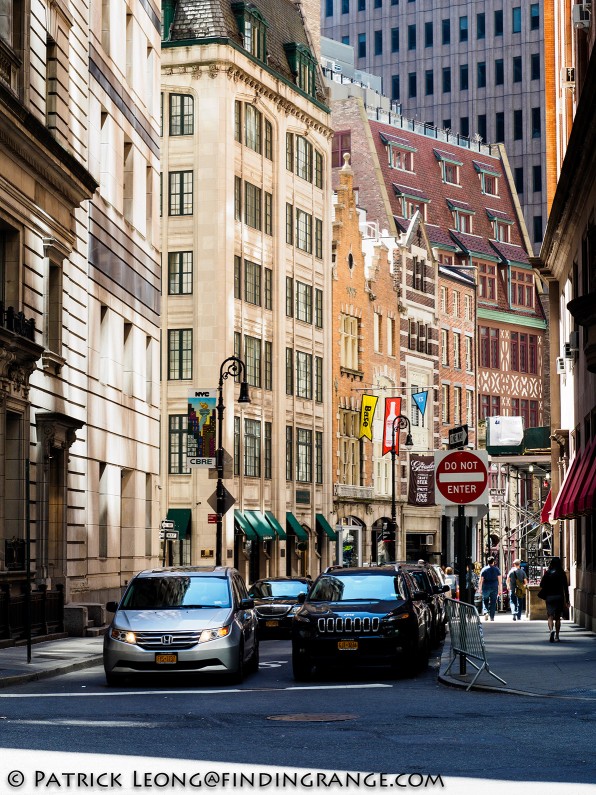
↑ When you stop this lens down, it’s even sharper, which is very hard to believe since it’s already one of the sharpest lenses that I’ve ever used wide open. This was taken at F8.
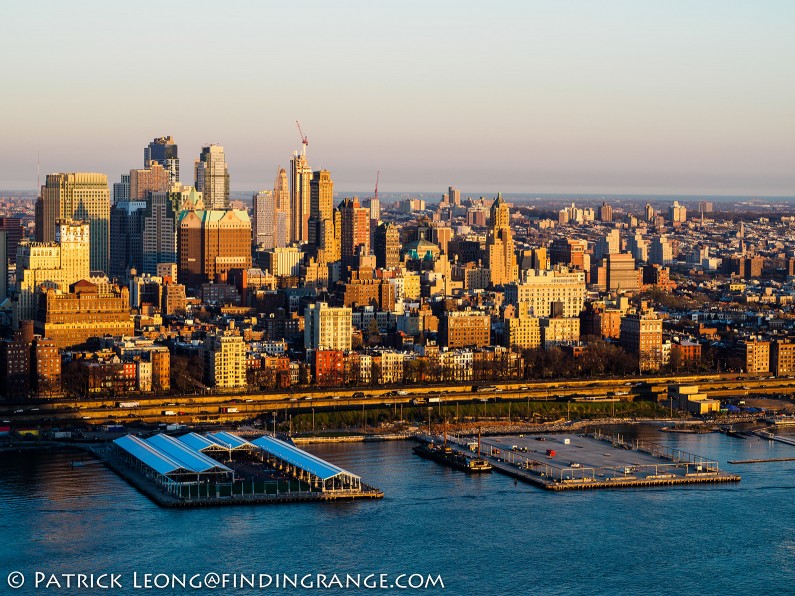
↑ Here is a photo taken at F5.6.

↑ Here is another example at F1.2.
To top all of that off, the bokeh and shallow depth of field is some of the best that I’ve ever seen. Personally, I don’t like to shoot everything at maximum aperture but with this lens, it was hard not to. The bokeh is so amazingly smooth, creamy, and inviting. There is simply nothing harsh about it yet I never felt like I was drowning in a sea of bokeh. In other words, it never felt overdone. This has got to be some of the best bokeh that you can get from any lens. The bokeh complemented the overall image instead of trying to take over the entire image. I also love how the smoothness of the bokeh works with the extreme sharpness of the subject. You can really produce some amazing, incredible stuff with this lens.

↑ This was taken at F1.2. There are a lot of stuff going on in the background, and a lesser lens might’ve made the background look too busy. But as you can see, it is quite smooth.
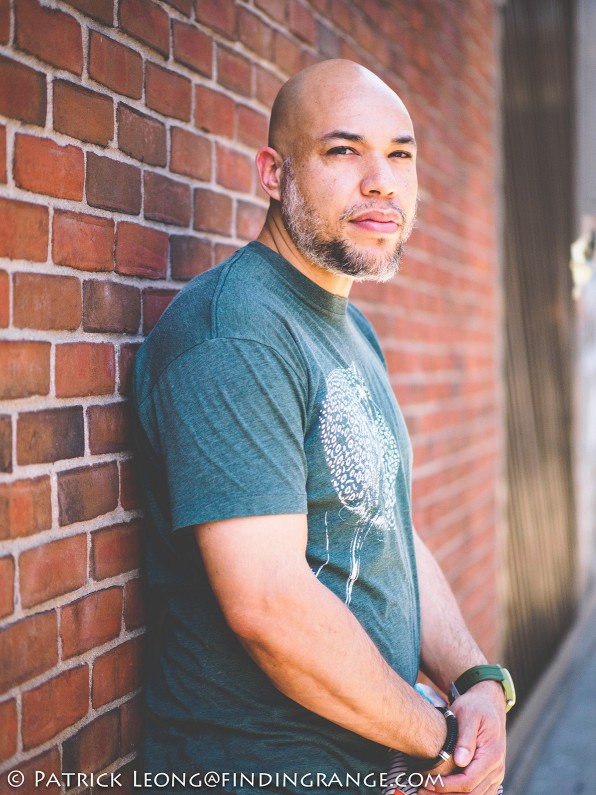
↑ I just love how much depth is in this photo. This was taken at F1.2.
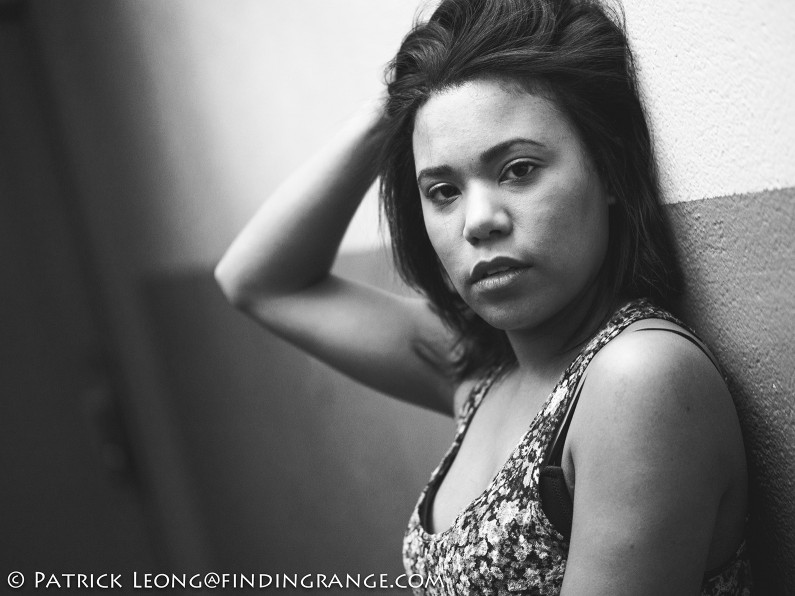
↑ Here is another taken at F1.2.
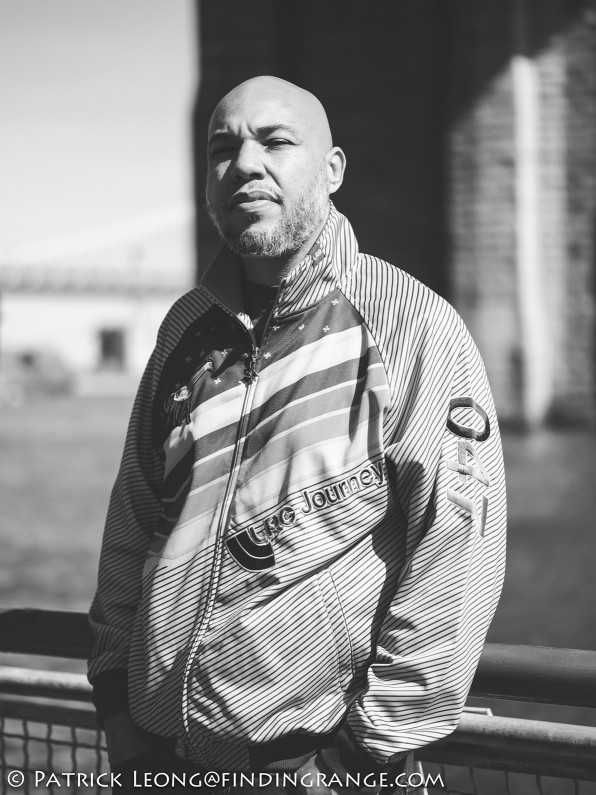
↑ Here is one more example taken at F1.2. This was taken under the Brooklyn Bridge.
Overall, Panasonic Leica 42.5mm F1.2 DG Nocticron ASPH is a near perfect lens but it’s more than just technical goodness that you get from it. There is something about the way that this lens draws that makes me so addicted to it. As I just described, everything about this lens is top tier. It’s got the best of everything, and sometimes when a lens is this good, it can translate into something that produces sterile, dry, and boring images. But this isn’t the case with the 42.5mm Nocticron. It has plenty of character, and it has no problems showing it off, which is what I believe makes an excellent lens a truly special one.
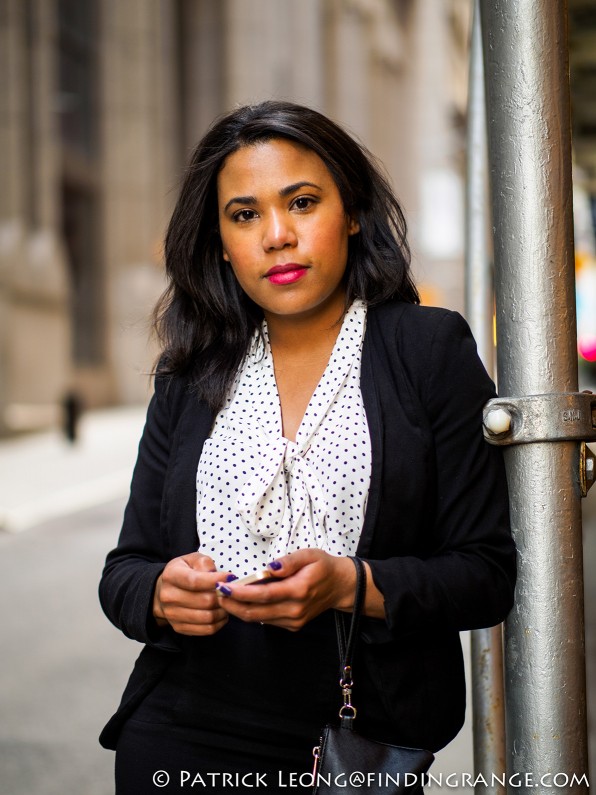
↑ Here’s another example taken at F1.2.
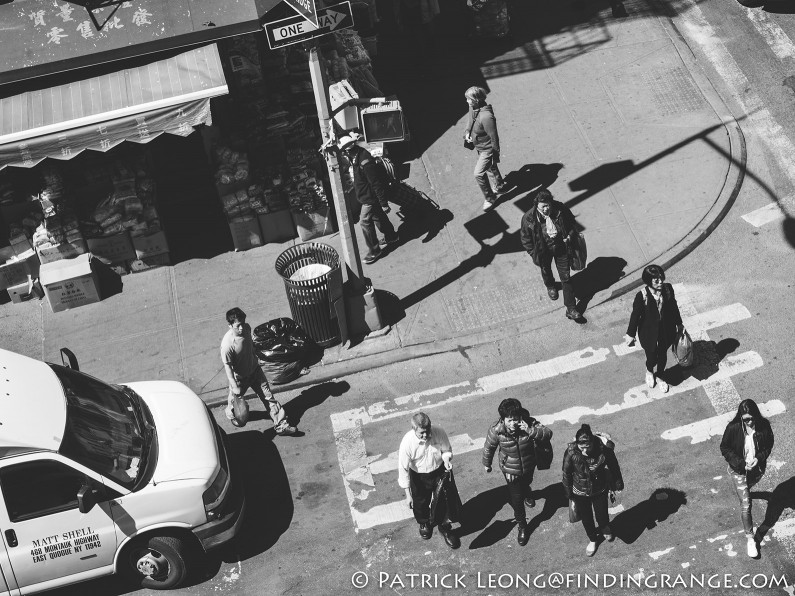
↑ Here is a photo taken from the Manhattan Bridge using F11.
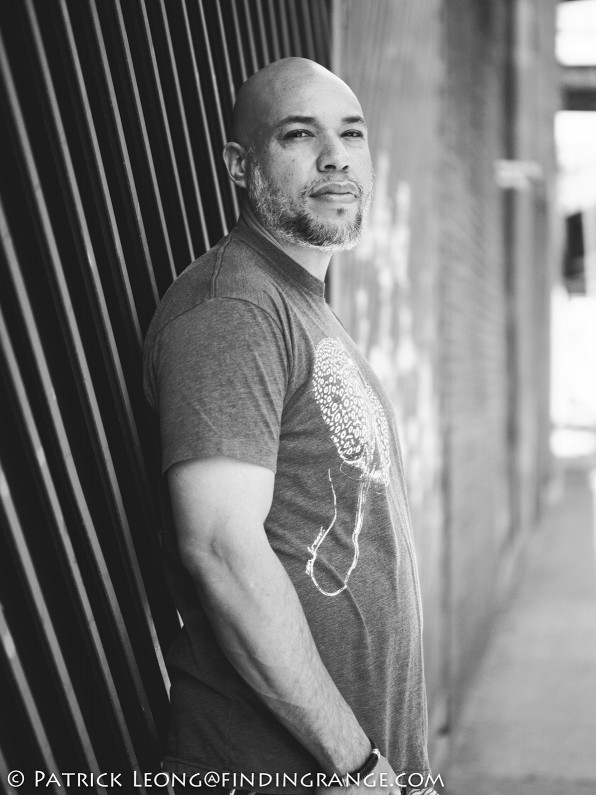
↑ Here’s one taken at F1.2.

↑ This lens is definitely quick enough for street photography even when using its maximum aperture.
Panasonic Leica 42.5mm F1.2 DG Nocticron ASPH Pros and Cons:
Panasonic Leica 42.5mm F1.2 DG Nocticron ASPH Pros:
- Fantastic build; some of the best that I’ve seen not just for micro four thirds but for many other systems.
- Well balanced on a micro four thirds body.
- Very fast and accurate autofocus.
- This lens will produce some of the best image quality out there.
- Extremely sharp; sharpest lens that I’ve used in the micro four thirds world.
- Images shot at F1.2 look amazing!
- Images have character.
- My favorite micro thirds lens and one of my overall favorites of any system.
Panasonic Leica 42.5mm F1.2 DG Nocticron ASPH Cons:
- Not weather sealed.
- A large lens for the micro four thirds system.
- Lens hood makes this lens even larger.
- While I think it’s worth it, price is still very high.
Panasonic Leica 42.5mm F1.2 DG Nocticron ASPH Verdict:
The Panasonic Leica 42.5mm F1.2 DG Nocticron ASPH is simply one of the best short tele lenses that you can buy. There’s no doubt that this lens is large and heavy. At nearly $1,600, it’s also crazy expensive but the bottom line is this is a no-compromise design. Everything about this lens is top tier and all about giving you the maximum performance. The build is some of the best in the mirrorless world, and so is the image quality.
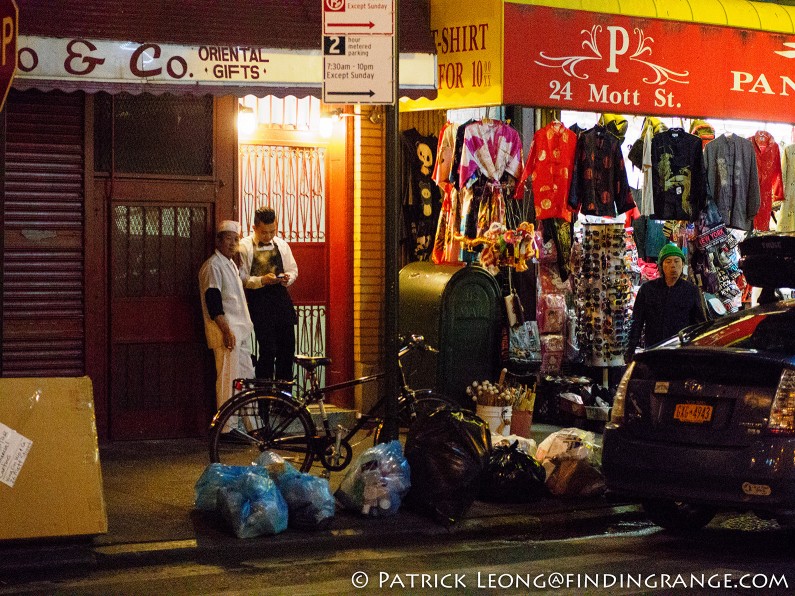
↑ Again, I was testing the high ISO capabilities of the Pen-F. This was taken at F2.
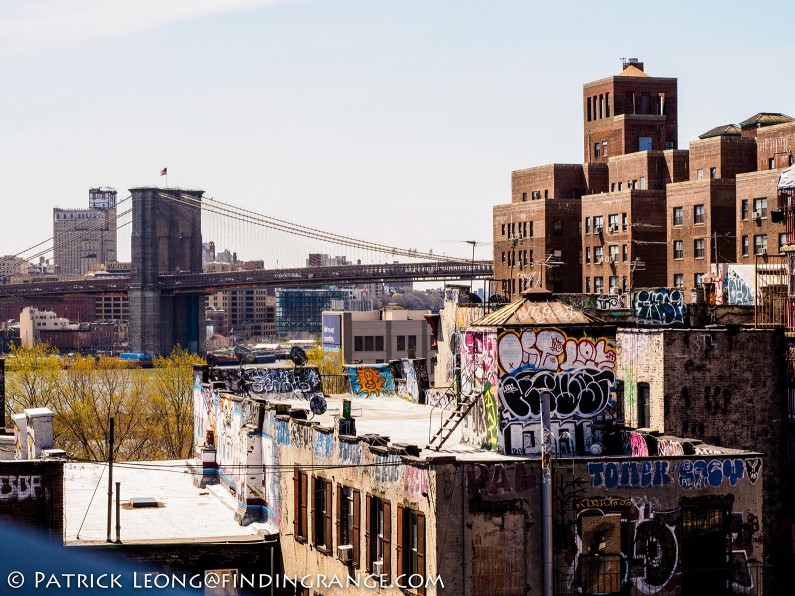
↑ The Brooklyn Bridge; this was taken at F11.
↑ Canal Street has got a lot of cool stuff going on at night. This was taken wide open.
↑ I’m telling you, I’m addicted to the Nocticron’s maximum aperture ;).
↑ The Nocticron is one of the most well-built lenses in the micro four thirds system.
Overall, I was not expecting to be this impressed with the Nocticron but I am. I loved every minute I had with this lens, and it was incredibly hard to force myself to use other lenses for my Pen-F review because I simply couldn’t get enough of it. This is one of those special lenses that will really get the most out of your micro four thirds camera. As I said in my Pen-F review, I will buy that camera one day, and the first lens I’m purchasing is this one. That’s how much I’ve enjoyed using the Nocticron. With the weight, overall size, and price tag, the Nocticron may not be designed for everyone but for the few who demand the ultimate in performance from a short tele in the micro four thirds world, there’s no need to look any further.
Thanks for taking the time to read my review. If you’re considering purchasing the 42.5mm Nocticron ASPH, and my review helped you decide, please help support this site by purchasing from the links below or any mentioned in this review. It will not cost you anything extra. Thank you for your support!
Panasonic Leica 42.5mm F1.2 DG Nocticron ASPH at B&H Photo

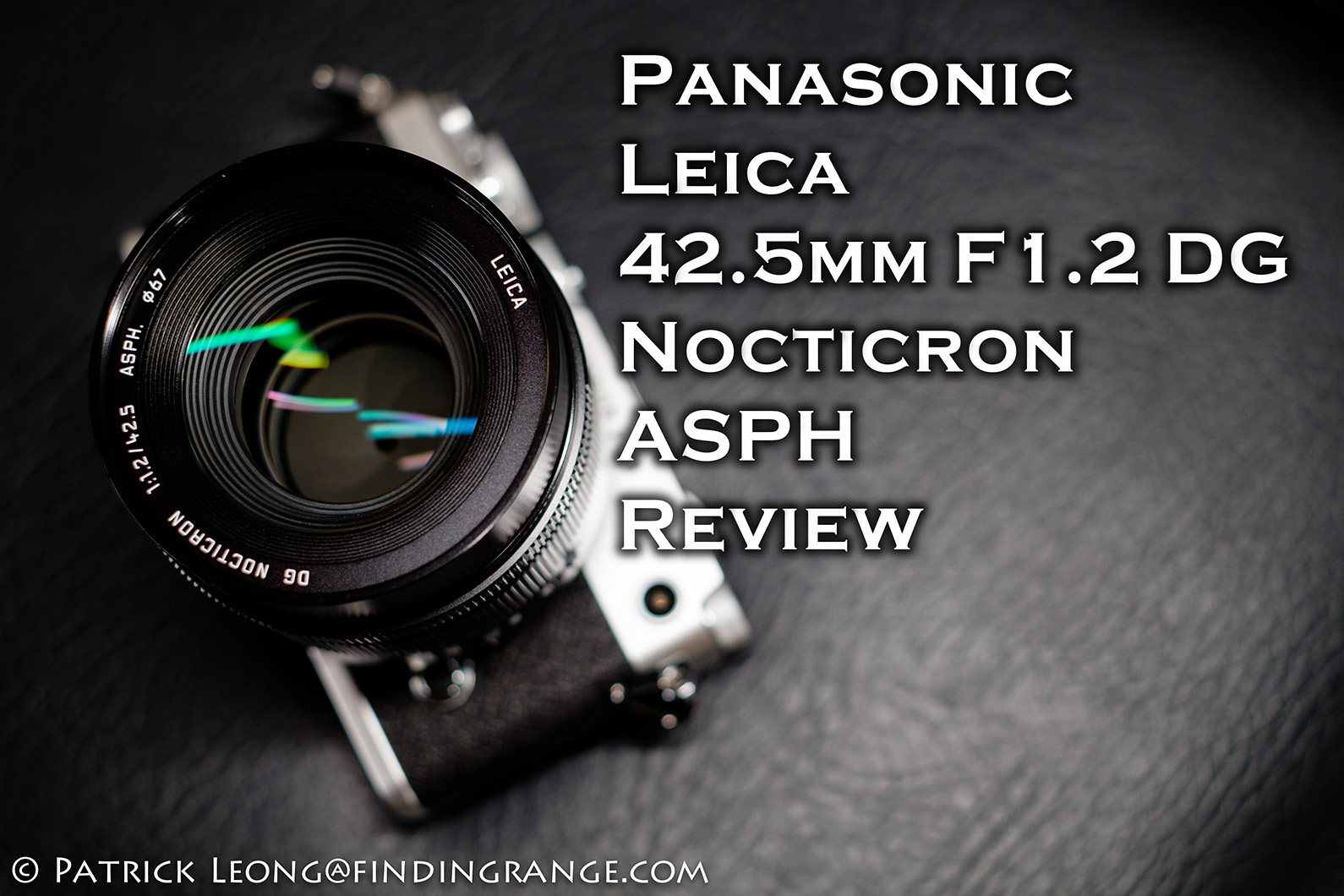
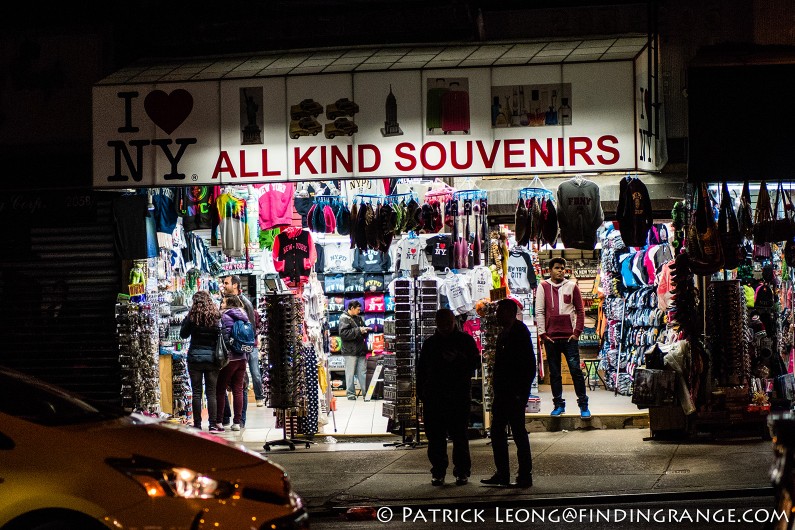
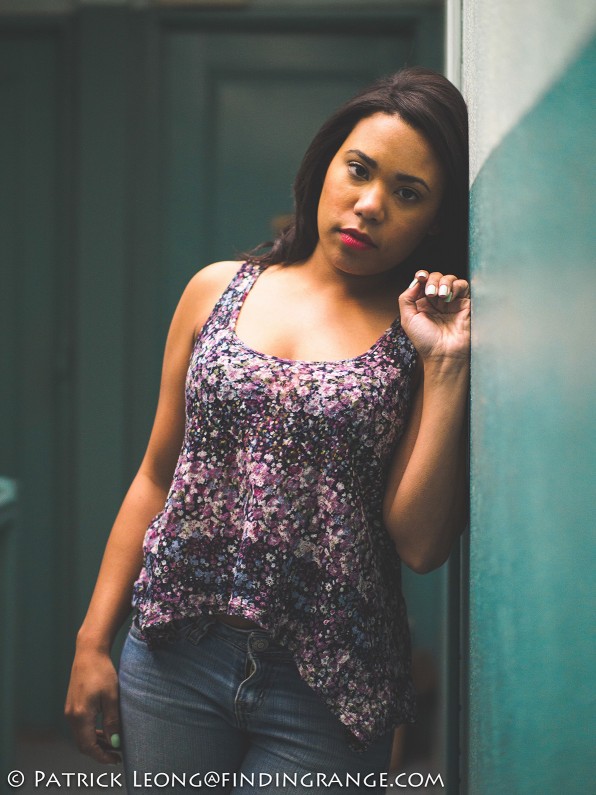
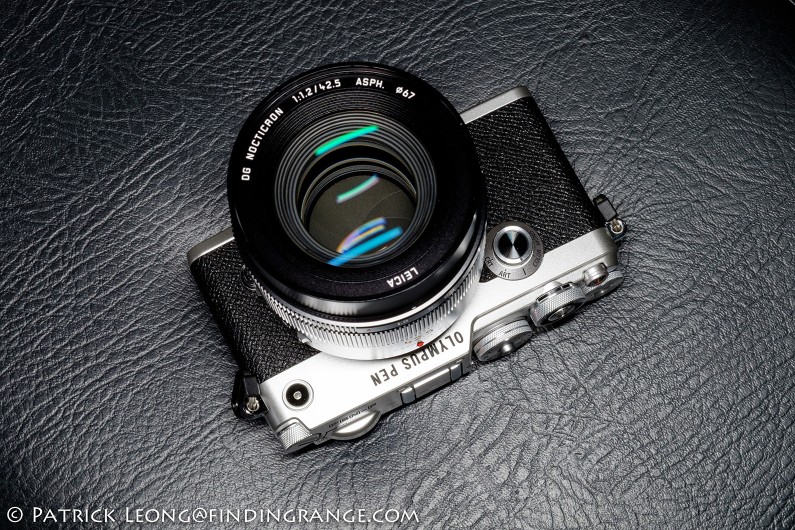
nice review, i have this combo, and love them
Thanks yuddy!
I appreciate you taking the time to read it! It’s a fantastic combo, I hope you’re enjoying it!
Best regards,
Patrick
Nice Review!
What would be your pick?
Nocticron with OMD EM10 II or Panasonic GX85/80?
Best regards,
Christoph
Thanks Christoph!
I greatly appreciate you taking the time to read my review! OMD or GX85? Hmm…I think they both have their own advantages and disadvantages making them in the end pretty equally matched in my opinion. If I had to choose though, I would probably go with the OMD.
Best regards,
Patrick
Nice review. I understand that you still have the Fuji XF 56mm APD. Out of these two, which lens do you like better?
Hi inthedarkroom,
Thanks for taking the time to read it! That’s a difficult question for me to answer :). I love my XF 56mm APD but at the same time, I loved using the Nocticron so much that I used it more than any other micro four thirds lens when I was reviewing the Pen-F. Both are optically superb, and truthfully, I think it would be pretty hard to say which one would be the clear winner. But I definitely find the Nocticron to be a better built lens. It feels like a mini-tank. But because of the sensor crop, you’ll get a shallower depth of field with the Fuji. Of course, I’d still be perfectly fine with the Nocticron. I may have to see if I can get another loaner to do a comparison between the two lenses one day.
Best regards,
Patrick
Patrick, great “real world” review and wonderful images to accompany it. I’m a portrait photographer trying to decide if this lens is worth it. You can see my work here: http://www.vtfoto.com
I think you might have just convinced me. 🙂
Thanks, Vincent!
Sorry for the late reply, I just got back from my vacation. I greatly appreciate you taking the time to read my review, and I’m glad it was helpful! It’s one of my favorite lenses from any system. Also, thanks for sharing your website with me. You’re work is absolutely beautiful! Please come back and let me know what you think of the lens!
Best regards,
Patrick
Patrick, for travel and street photography given one choice would u use this Nocticron 42.5mm f1.2 or Pan Leica Summilux 25mm f1.4 ASPH? My camera is Lumix GX85.
Thank you
Hi Ronald!
Given one choice, I’d go with the 25mm. The shorter focal length makes it more flexible. Also, the 25mm is more compact, and lighter making it not only more discreet (the Noctricron is a big piece of glass) but also easier to carry around all day. With all that said, the Nocticron is my favorite M43 lens, so if possible, I would bring both :). They really compliment each other well: both are fast, and optically excellent. I hope this helps!
Best,
Patrick
Thanks for the prompt reply, Patrick 🙂
I looked back at my past travel photos and roughly have this breakdown in each trip:
– Landscape: 30%
– Architecture: 20%
– Street with people: 20%
– Portrait: 10%
– Animals and macro: 10%
– Lowlight: 10%
Plus I was always on the move in my travel with a very patient albeit occassionaly hangry wife. I also want to reduce my time behind the camera and more immersed in the moment with her. Through the years I hv reduced the lenses I bring down to just two and hv stopped taking my tripods. So now I hv been thinking how else I can reduce my photography time without missing those Kodak moments. Maybe having a second body would help? I am planning to hv the Lumix GX85 + PL 25mm f1.4 as my second body for mostly street, portrait and food pics. And for my landscape and architecture I will be using Sony A6500 + 18-105G or Sigma 16mm F1.4. What do you think?
Anytime, Ronald!
I can relate as well; I remember going to Bermuda with my girlfriend at the time, and I had a bag full with gear. She was supportive but let’s just say she wasn’t always ecstatic about it :).
Your setup sounds good. Both cameras are compact, and that zoom for the Sony has such a wide range that it will definitely allow you to still get a lot of shots but at the same time worry less about gear. The GX85 with the 25mm f1.4 will be great for street photography and pretty much anything else you can fit in a 50mm equivalent focal length. You may find there are days, you are happy just bringing the GX85 and nothing else. It’s a decent camera and that lens is superb.
Best,
Patrick
Awesome, thank you Patrick and keep sharing those beautiful photos you’re making. This blog is one of the better reviews out there as it has real life examples from the lens. All the best!
Hi Ronald,
Apologies for the late reply! I came back from Japan recently, and the jet lag is still getting to me. Thank you so much for your kind words! They really mean a lot! I’m just glad I can help out in any way. I hope to see you around again soon, and you can also send me an email from my contact page if you need any help. Let me know how that set up works out for you when you get it! Talk to you soon!
Best,
Patrick
What a great review. Your information and pictures make it really helpful for real world and practical use. Photo examples are excellent. I’ve now bought this lens! It’s on a GH5ii at the moment but I want to try it on a smaller body like the Pen or GX, if I can get one. Initially I thought it will work best with a bigger body and matching it with Panasonic for the image stabilisation and perhaps better auto focus communication. But your pictures shows you’re getting great results on an Olympus Pen. I’ll be testing it out over next few days during daylight but especially low light and night for photo and video.
Hi Ahmad!
Apologies for the late reply! Thanks so much for taking the time to read my review! I hope you are enjoying the lens. It is one of the best out there. Take care, and thanks for stopping by!
Best,
Patrick